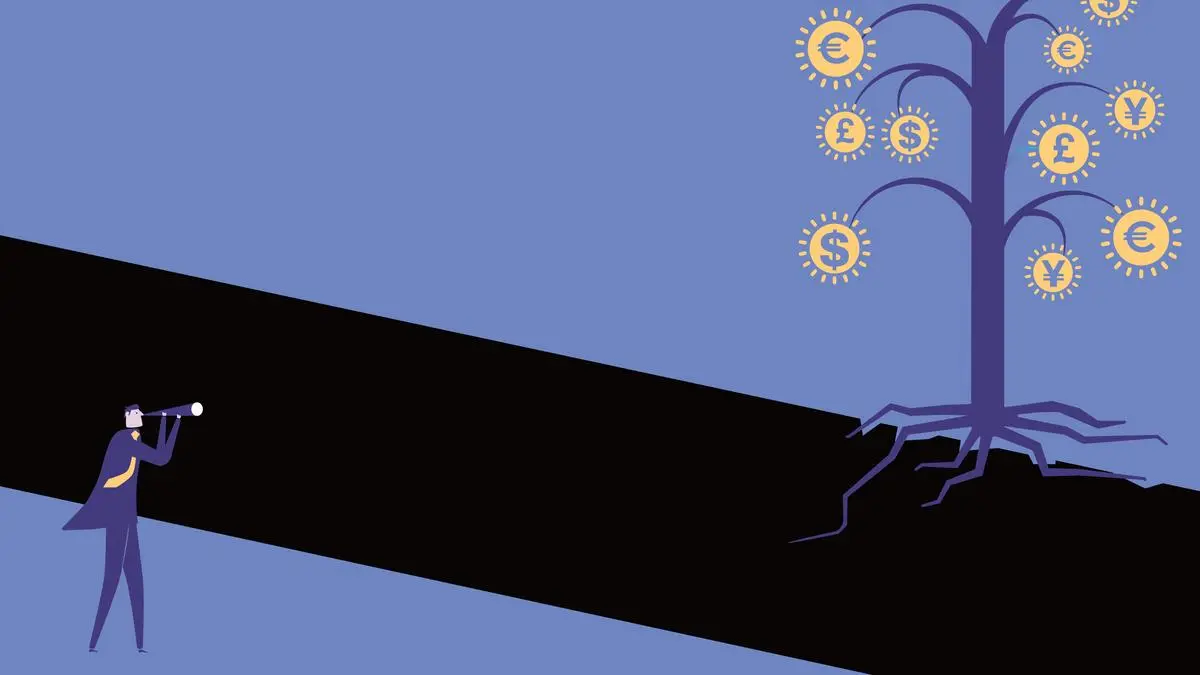
Bitcoin uses a decentralized system and a decentralized peer-to-peer ledger. It has the potential to become a globally accepted payment method and revolutionize people’s access to finances and financial services. However, most governments do not control or recognize it, and central banks cannot influence it.
This creates a few questions because there are those who favor removing the influence and regulatory stances governments have on currencies. There are also those who believe cryptocurrency is not a viable replacement for government-backed currency. So, is it possible Bitcoin could replace central banks and fiat currencies? Learn more about what Bitcoin really is and whether the potential exists or not.
Key Takeaways
- Some believe Bitcoin’s peer-to-peer technology and decentralized system have the potential to upend the role of central banks in modern financial infrastructure.
- Proponents of central banks say they are vital to the economy, maintaining employment, stabilizing prices, and helping keep the financial system going in times of crisis. Critics suggest they have a negative impact on consumers and the economy and are responsible for debilitating recessions.
- Some central banks are borrowing elements of Bitcoin’s design and technology to explore the use of central bank digital currencies (CBDCs) in their economies.
Role of Central Banks in an Economy
Before exploring the effect of Bitcoin on central banks, it is important to understand the role that central banks play in an economy. Central bank policymaking underpins the global financial system, and their mandates vary by country. For example, the Federal Reserve in the United States is responsible for controlling inflation and maintaining maximum sustainable employment. The Bank of England ensures the stability and solvency of the financial system in the United Kingdom.
Central Bank Tools
Central banks use a variety of tactics, known as monetary policy, to achieve their mandates. Mainly, however, they manipulate the money supply and interest rates. For example, a central bank might increase or decrease the amount of money circulating in an economy. More money in an economy equals more consumer spending and, consequently, economic growth. The opposite situation—i.e., less money in an economy—translates to one where consumers spend less.
A central bank’s actions also affect imports, exports, and overseas investment. For example, high interest rates can deter investment by foreign entities in real estate, while low interest rates can promote investment.
Central banks use a network of banks to distribute money in an economic system. In that sense, they are the pivot of an economy’s financial infrastructure, which consists of banks and financial institutions. Central bank policymaking can result in economic booms and busts if not managed correctly.
Perhaps the biggest advantage is that a central bank builds trust in the system. A central bank-issued currency is backstopped by a trusted authority and can be exchanged at a universal value. If each party in a monetary transaction issued its own coins, then there would be competition among the currencies, and chaos would ensue.
Issues Central Banks Address
A chaotic currency situation existed in the days before the Federal Reserve came into being. Money issued by non-bank entities like merchants and municipal corporations proliferated throughout the U.S. monetary system. The exchange rates for each of these currencies varied, and many were frauds, not backed by enough gold reserves to justify their valuations. Bank runs and panics periodically convulsed the U.S. economy.
Immediately after the Civil War, the National Currency Act of 1863 and the National Bank Act of 1864 helped set the grounding for a centralized and federal money system. A uniform national banknote that was redeemable at face value in commercial centers across the country was issued. The Federal Reserve’s creation in 1913 brought more monetary and financial stability to the economy.
A Central Decision-Making Authority
The problem with the structure described above is that it places far too much trust and responsibility on the decisions of a central agency. Debilitating recessions have resulted from improper monetary policy measures pursued by central banks.
The Great Depression, the biggest economic recession in the history of the United States, occurred due to mismanaged economic policy and a series of wrong decisions by local Federal Reserve banks, according to former Fed Chairman Ben Bernanke. The Financial Crisis and the Great Recession of 2008 occurred because the Federal Reserve slackened its hold on the economy and pursued a policy of loose interest rates for too long—which was taken advantage of by those in positions to do so.
Various academic papers and articles have ascribed the recession to exotic derivative trading in which housing loans of insolvent borrowers were repackaged into complex products to make them seem attractive. Attracted to profits from these trades, banks sold the products to unsuspecting buyers who resold the tranches to buyers across the world.
The entire financial system generated fat profits. “As long as the music’s playing, you’ve got to get up and dance. We are still dancing,” then-Citigroup CEO Chuck Prince infamously told journalists. All of these trades were backstopped by money at the Federal Reserve.
The interconnected nature of the global economy means that policymaking decisions (and errors) by one central bank are transmitted across many countries. For example, the contagion of the Great Recession did not take long to spread from the United States to other economies and led to a global swoon in stock markets.
Can Bitcoin Kill Central Banks?
The case for Bitcoin as an alternative to central banks is based on economics and technology. Satoshi Nakamoto, Bitcoin’s inventor, defined the cryptocurrency as a “peer-to-peer version of electronic cash” that allows “online payments to be sent directly from one party to another without going through a financial institution.”
However, arguments favoring Bitcoin replacing central banks and currencies have several issues. First, users have to understand what they are using. The cryptocurrency’s first iteration was introduced to the public using a command line and programming skills—something many people still lack knowledge of.
Second, wallets with graphic user interfaces were created to make cryptocurrency easier to use. However, these introduced software vulnerabilities that make it as easy to steal keys as money. So, there’s no reason to use it instead of issued currency.
Third, Bitcoin is a convertible currency in nearly every jurisdiction on the planet, with a rate of exchange based on whichever currency a user wishes. For it to replace central banks and government-backed currencies, all governments and central banks would need to declare that their country’s currency was unusable and only Bitcoin could be used.
Fourth, Bitcoin has a limited supply that will ever be issued. The intent behind this was to slow the rate at which it was introduced so that it would maintain its value and act as an “inflation-proofing” measure. However, because it must be converted to fiat currency to be used, it is subject to the inflation those currencies are affected by. One bitcoin might be exchanged for $73,000, but how much each of those dollars buys changes over time—it generally decreases.
Even if there were no other currencies except Bitcoin, the amount one bitcoin or satoshi could buy would change over time because the costs to produce goods and services always rise, regardless of the medium of exchange.
Finally, although there are likely many more reasons, Bitcoin has not been adopted at a rate that would suggest it is likely to become a replacement for current financial systems. Instead, it has earned a place as a favorite for financial speculators and risk-takers because they believe its price will continue to rise even with nothing backing it but hype.
Is Bitcoin Controlled by Central Banks?
Bitcoin is decentralized, which means that central banks do not control them. Governments can regulate its use, giving them some control over it.
Is Bitcoin a Threat to Central Banks?
In its current state, Bitcoin is not likely to threaten central banks.
Will CBDC Affect Bitcoin?
Central bank digital currencies are backed and controlled by a government and central bank. Only a few countries have released a CBDC, but many are investigating their feasibility. Bitcoin is a convertible currency, whereas a CBDC wouldn’t need to be converted to a fiat currency to be usable. It’s possible, but just as unlikely, that Bitcoin and CBDCs will compete to be accepted by governments.
The Bottom Line
Central banks are at the helm of the modern global financial infrastructure in the current economic system. An overwhelming majority of countries worldwide use central banks to manage their economies. While it offers several advantages, this form of centralized structure vests excessive power on a single authority and has resulted in severe economic recessions.
Bitcoin’s technology relies on algorithmic trust, and its decentralized system offers an alternative to the current system. However, because of the issues it raises and faces, it is unlikely that it will replace central banks anytime soon.


